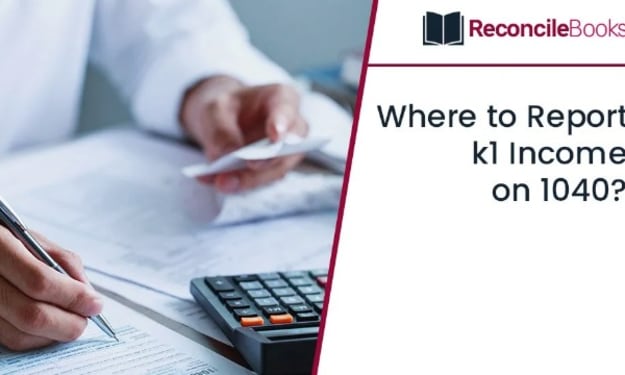How to Correct Out of Balance General Ledger in Sage 50
What Is a Balance Sheet Reconciliation?

Do you find yourself scratching your head over your Sage balance sheet? Are the numbers just not adding up no matter how many times you double-check them? You're not alone. Many businesses struggle with balancing their Sage balance sheets, but fear not! In this blog post, we'll go over some common reasons why your Sage balance sheet may not be balancing and provide strategies on how to fix it. So grab a cup of coffee and let's dive in!
Introduction
If you're a business owner who uses Sage accounting software, you may have come across the occasional error in your balance sheet. While this can be frustrating, it's not necessarily cause for alarm – in most cases, it can be easily fixed.
In this blog post, we'll take a look at some of the common reasons why your Sage balance sheet may not be balancing, and how to fix them.
One of the most common reasons for an unbalanced balance sheet is that the wrong account has been selected as the "accounts receivable" or "accounts payable" account. This can happen if you've manually entered transactions into Sage, or if you've imported data from another accounting system.
To fix this, simply go to the "Settings" tab in Sage and select the correct account for each category.
Another common reason for an unbalanced balance sheet is incorrect coding of transactions. This can happen if you've manually entered transactions into Sage, or if you've imported data from another accounting system.
To fix this, go to the "Transactions" tab in Sage and check that all transactions have been coded correctly. If not, simply edit the transaction and select the correct code.
Causes of an Unbalanced Balance Sheet
There are a few different things that can cause an unbalanced balance sheet in Sage. One common issue is that the beginning or ending balance for an account is entered incorrectly. This can happen if there is a mistake when manually entering data into Sage, or if data is imported from another system incorrectly.
Another cause of an unbalanced balance sheet can be due to incorrect account classifications. For example, Sage Balance Sheet Doesn't Balance if an asset account is mistakenly classified as a liability, this will throw off the balance sheet. This can also happen if transactions are posted to the wrong accounts.
Finally, rounding errors can also cause an imbalance in the balance sheet. This usually happens when there are many small transactions that are all rounded to the nearest dollar. Over time, these rounding errors can add up and cause an imbalance.
If your Sage balance sheet is not balancing, it's important to take a look at all of these possible causes and correct any errors that you find. By doing so, you'll ensure that your financial statements are accurate and give you the information you need to make sound business decisions.
Common Mistakes When Preparing the Sage Balance Sheet
There are a few common mistakes that can occur when preparing the Sage balance sheet. First, make sure that all of the account balances in Sage are accurate. This includes the Accounts Receivable, Accounts Payable, and Inventory accounts. If any of these balances are off, it can throw the whole balance sheet off.
Another common mistake is not including all of the necessary accounts in the balance sheet. Be sure to include all Fixed Assets, such as equipment or real estate, as well as any other relevant accounts, such as loans or credit lines.
Finally, make sure that the debits and credits are balanced. This may seem like a no-brainer, but it's easy to make a simple math error that can cause your balance sheet to be out of balance. If you're not confident in your math skills, it's best to have someone else double-check your work before you publish the balance sheet.
Steps for Balancing the Sage Balance Sheet
There are a few things that can cause your Sage balance sheet to become unbalanced. Luckily, there are also a few steps you can take to fix the issue.
1. Check for any errors in your data entry. This is the most common cause of an unbalanced balance sheet. Simply double-checking your work can often fix the problem.
2. Make sure all transactions are entered into Sage. Sometimes items can be missed, which will throw off the balance.
3. Compare your Sage balance sheet to your bank statement or other financial records. If there are discrepancies, investigate and correct them as needed.
4. Adjust your chart of accounts as necessary. This may be necessary if you’ve made changes to your business or added new products or services.
5. If you’re still having trouble, reach out to a qualified accountant or bookkeeper for help. They will be able to identify any remaining issues and help you get your balance sheet back on track.
Read also: Start New Fiscal Year in Sage 50
How to Avoid Future Problems with the Sage Balance Sheet
If you're having problems with your Sage balance sheet, it's important to take steps to avoid future problems.
Here are some tips:
1. Review your account balances regularly. This will help you catch any discrepancies early on.
2. Make sure all transactions are entered correctly. This includes both revenue and expenses.
3. Keep good records of all financial transactions. This will make it easier to spot errors and correct them.
4. Reconcile your bank statements monthly. This will ensure that all transactions are accounted for and help prevent errors in the future.
5. If you make any changes to your accounting system, test the changes before implementing them live. This will help avoid any potential issues down the road.
Conclusion
As we come to the end of this article, it is important to note that understanding why your Sage balance sheet may not be balancing and how to fix it can save you a lot of headache. By following the steps outlined in this article, you should be able to determine the root cause and take corrective measures accordingly. With a bit of patience and attention, Sage 50 2022 Install Windows 11 you will soon have everything back in order so your business runs smoothly once again.
About the Creator
Jay Holmes
Reconciling accounts eliminates inaccuracies in your books. At ReconcileBooks, we offer comprehensive solutions to help both QuickBooks and Sage 50.






Comments
There are no comments for this story
Be the first to respond and start the conversation.